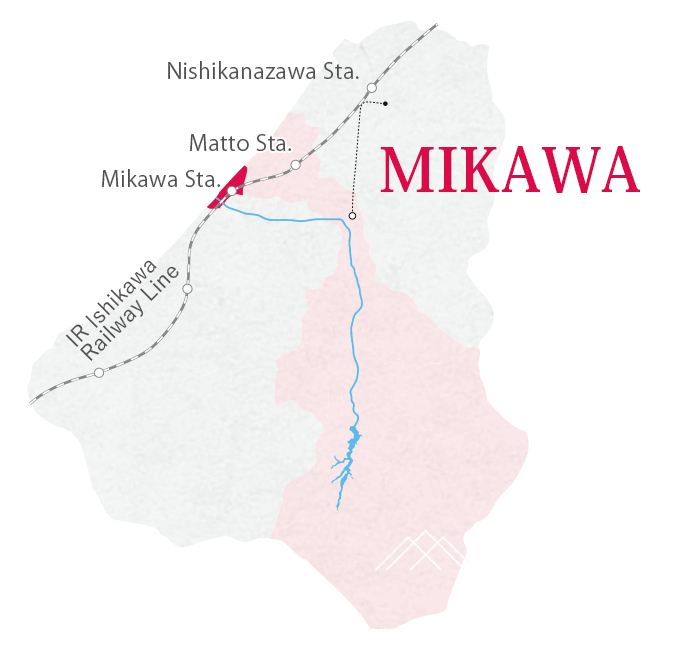
It is a 17-minute local-train ride from JR Kanazawa Station to IR Mikawa Station. Mikawa is a town that reached the height of its prosperity back in the Edo Period, thanks to its busy port for Kitamae ships. Its history and popular local food await you.
Roots of Ishikawa Museum
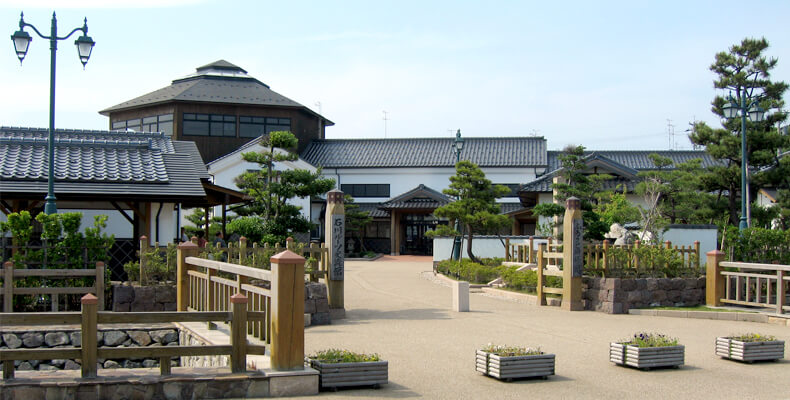
The prefectural government office was temporarily set up in the former Mikawa Town in 1872, from which the name of the prefecture "Ishikawa" is said to have originated. Here you can find a reproduction of the former governor's office called "Ishikawa-no-Roots-kan," an Okaeri festival corner, and exhibition rooms for the Tedori River and Kitamae ships. This museum provides a lot of information about the Mikawa.
| Address | Nu-138-1 Mikawa-minami-machi, Hakusan |
|---|---|
| Open | 9:00am ~ 5:00pm |
| Closed | Monday (if it is a holiday, the following day), Year-end and New Year's holidays |
| Admission | Adults: ¥300 Junior high school students or younger: free |
| Access | IR: Mikawa Station/ Community bus "Megûru": Ishikawa Roots Museum/ By car: 5min-ride from IR Mikawa Station |
| Parking | 30 vehicles |
| Tel | 076-278-7111 |
Kuretake Library
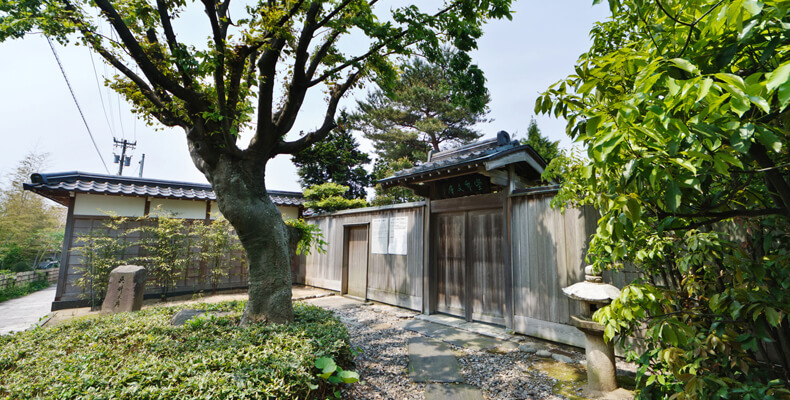
This was once a private library that Gentaro Kumada, a former Kitamae ship owner, opened at his home in 1922. Currently over 13,000 books, works of art, and old documents are on display.
| Address | Yo-146 Minato-machi, Hakusan |
|---|---|
| Open | 9:00am ~ 5:00pm |
| Closed | Monday (if it is a holiday, the following day), Year-end and New Year's holidays, period of exhibit change and temporary closing |
| Admission | Adults: ¥300 Junior high school students or younger: free |
| Access | IR: Komaiko Station/ By car: 10min-ride from IR Mikawa Station |
| Parking | Available |
| Tel | 076-278-6252 |
Fujitsuka Shrine
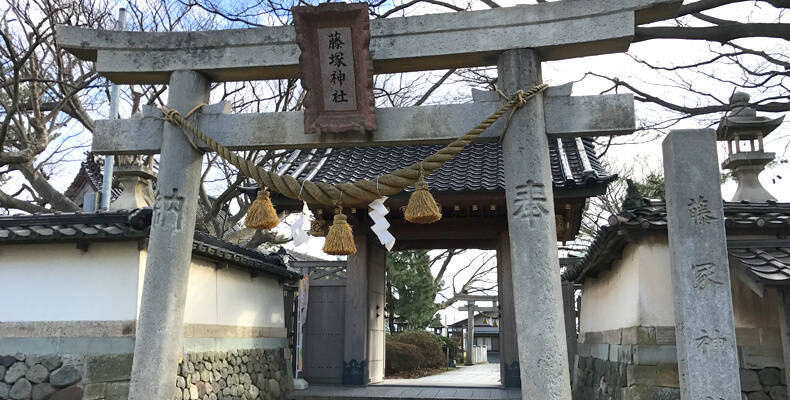
Called Fujitsuka-sanno in the Edo Period, this shrine got its current name after a couple of changes; it was called Motoyoshi-hiyoshi Shrine when the Edict on the separation of Shintoism and Buddhism was issued in the Meiji Period, and then Fujitsuka-hiyoshi-sha. Okaeri Festival, which started as a spring festival of the shrine in the mid-Edo Period, is designated as an Intangible Folk Cultural Property by the prefectural government. A portable shrine led by 13 festival floats leaves for the resting place in Takahama, located in Kimon or the unlucky direction from the shrine. It is paraded around the town with prayers for bumper crops and people's wellbeing. The festival floats, elaborately decorated with urushi lacquer designs known as maki-e or urushi-e, show us how wealthy the owners of Kitamae ships were, and how prosperous the port town was in the olden days.
| Address | Nu-167 Mikawa-minami-machi, Hakusan |
|---|---|
| Access | IR: Mikawa Station |
| Tel | 076-278-5355 |
Komaiko Beach
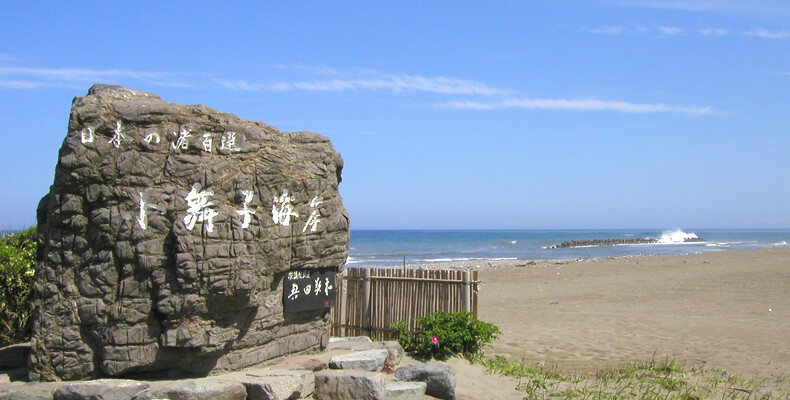
Komaiko Beach was selected as one of the 100 best beaches of Japan. Its name comes from the fact that it resembles Maiko-no-hama Beach in Hyogo Prefecture. The seawalls off the coast help secure an expanse of sand dunes and make for a calm, perfect-for-bathing sea.
| Address | i-1-3 Minato-machi, Hakusan |
|---|---|
| Open | 9:00am ~ 5:00pm (Mid Jul. ~ Mid Aug.) |
| Access | IR: Komaiko Station/ Community bus "Megûru": Kodomo Hiroba-mae / By car: 10min-ride from IR Mikawa Station |
| Parking | Available |
| Tel | 076-274-9554 |
Tedori Park
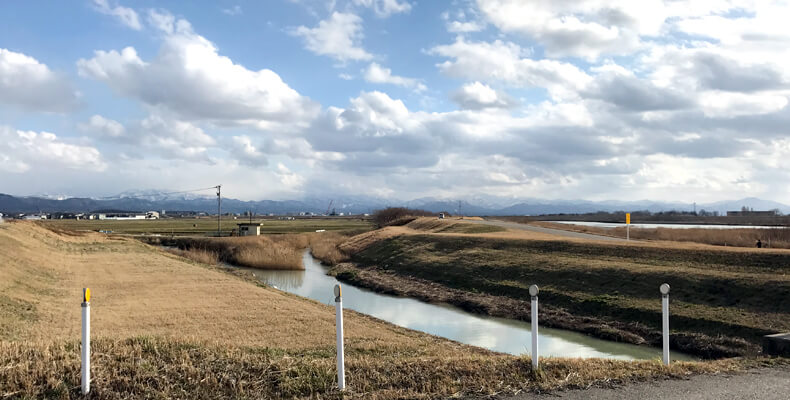
This park in the Tedori River basin has a sports field and open space with grass. You can enjoy sports and other recreational activities here.
| Address | Hiraka-machi and Minato-machi, Hakusan |
|---|---|
| Access | IR: Mikawa Station, Komaiko Station/ Community bus "Megûru": Ryokujuso/ By car: 4min-ride from IR Mikawa Station |
| Parking | 300 vehicles |
| Tel | 076-278-6250 |